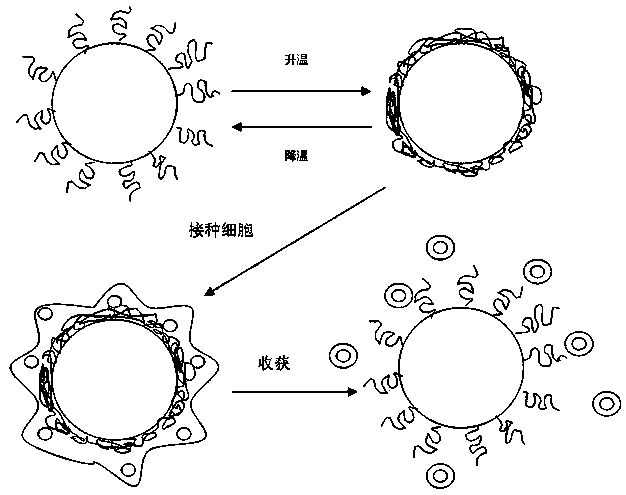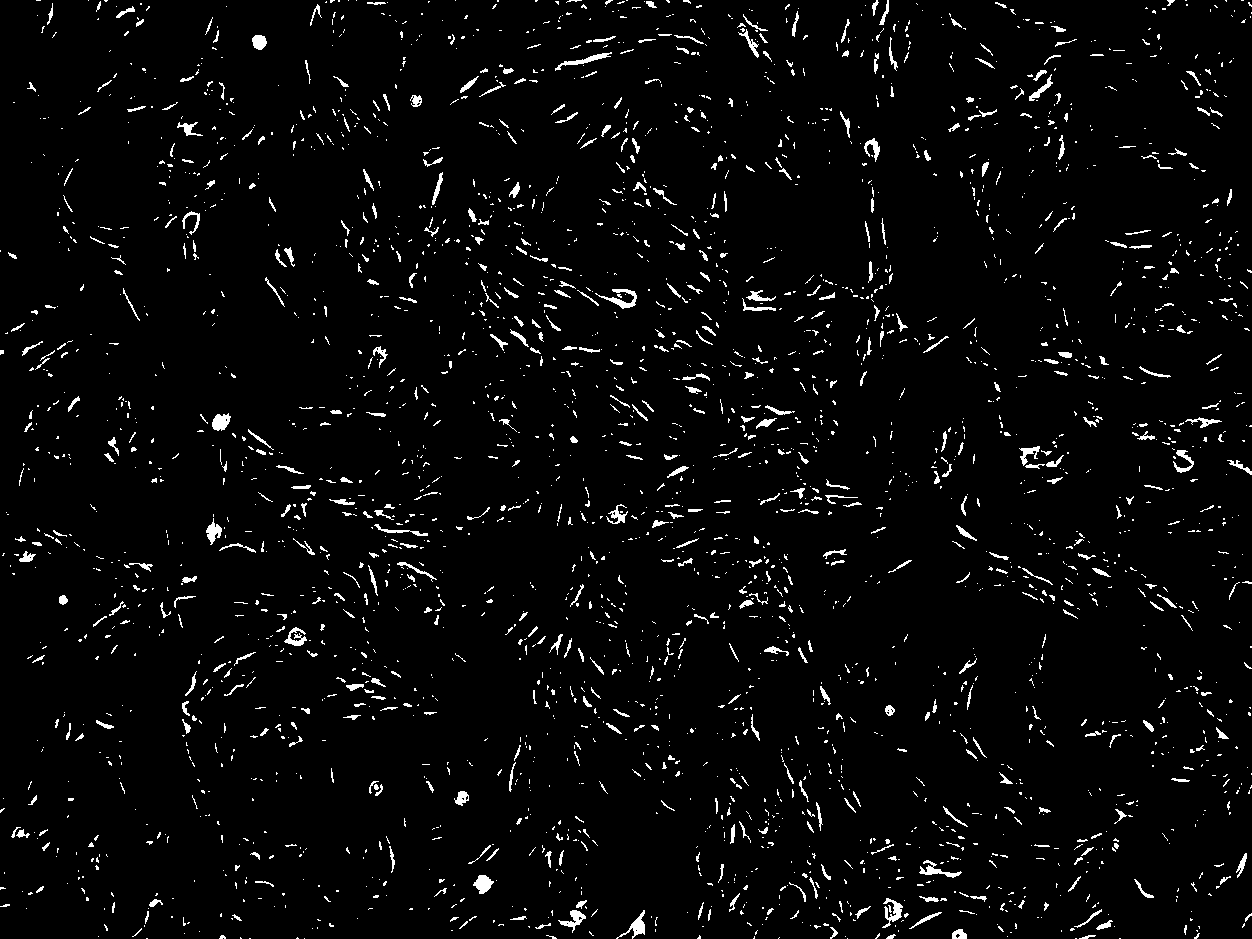Thermosensitive microcarrier as well as preparation technology and application method thereof
A micro-carrier and temperature-sensitive technology, applied in biochemical equipment and methods, microorganisms, artificial cell constructs, etc., can solve the problems of cell surface protein damage, high cost, limited application, etc., to maintain cell activity, easy operation, The effect of less energy consumption
- Summary
- Abstract
- Description
- Claims
- Application Information
AI Technical Summary
Problems solved by technology
Method used
Image
Examples
Embodiment 1
[0055] 1. Preparation of thermosensitive microcarriers:
[0056] 1) Add 1.0 g of dextran microspheres (G50) and 10 mL of dimethyl sulfoxide (DMSO) to a 25 mL round bottom flask, add 1.0 g of 2-chloropropionyl chloride, add a magnet and stir for 1.5 h, wash with methanol After 3-5 times, chemically modified dextran microspheres containing a large number of chlorine atoms on the surface are obtained;
[0057] 2) N-isopropylacrylamide (NiPAAm) was grafted by free radical ATRP polymerization, the method is as follows: dextran microspheres containing a large number of chlorine atoms modified by chloromethylation on the surface were added to a 50mL round bottom flask containing magnetons, Add N isopropylacrylamide (NIPAAm) 2.0 g, copper chloride (CuCl 2 ) 0.34 g, tris-(N'N dimethylaminoethylamine) (Me6Tren) 0.46 g, 25 mL deionized water, under anaerobic environment, add ascorbic acid 0.13 g, react at room temperature for 24 h, then wash with water for 3- After drying for 5 times, ...
Embodiment 2
[0066] 1. Preparation of thermosensitive microcarriers:
[0067] 1) Add 1.0 g of sodium alginate microspheres, 10 mL of dimethyl sulfoxide (DMSO) and 3 g of 2-aminomethyl chloride into a 25 mL round bottom flask, add a magnet and stir for 1 h, wash with methanol for 3 After -5 times, the chemically modified sodium alginate microspheres containing a large amount of amino groups on the surface were obtained;
[0068] 2) N-isopropylacrylamide (NiPAAm) is grafted by free radical ATRP polymerization, the method is as follows: add the above-mentioned chemically modified sodium alginate microspheres containing a large number of amino groups on the surface into a 50mL round bottom flask containing magnetons, and add N isopropylacrylamide (NIPAAm) 2.0 g, copper bromide (CuBr 2 ) 0.52 g, tris-(N'N dimethylaminoethylamine) (Me6Tren) 0.46 g, 20 mL deionized water, in an oxygen-free environment, add ascorbic acid 0.13 g, react at room temperature for 24 h, and then wash with water for 3 ...
Embodiment 3
[0077] 1. Preparation of thermosensitive microcarriers:
[0078] 1) Add 5.0 g of chitosan microspheres, 30 mL of dimethyl sulfoxide (DMSO) and 5.5 g of 2-bromopropionyl bromide into a 100 mL round bottom flask, add a magnet and stir for 1 h, wash with methanol for 3- After 5 times, the chemically modified dextran microspheres containing a large amount of bromine atoms on the surface were obtained; the chemically modified dextran microspheres containing a large amount of bromine atoms on the surface were mixed with 3.0 g of potassium ethyl xanthate in 20 mL of dichloro In methane and 20 mL of methanol, react at room temperature for 24 h, wash with water three times and dry to obtain chitosan microspheres with a large amount of ethyl xanthate structure on the surface;
[0079] 2) N-isopropylacrylamide (NiPAAm) grafting reaction method by plasma treatment, the method is as follows: Add 3.0 g of chitosan microspheres with a large amount of ethyl xanthate structure on the surface a...
PUM
 Login to View More
Login to View More Abstract
Description
Claims
Application Information
 Login to View More
Login to View More - R&D
- Intellectual Property
- Life Sciences
- Materials
- Tech Scout
- Unparalleled Data Quality
- Higher Quality Content
- 60% Fewer Hallucinations
Browse by: Latest US Patents, China's latest patents, Technical Efficacy Thesaurus, Application Domain, Technology Topic, Popular Technical Reports.
© 2025 PatSnap. All rights reserved.Legal|Privacy policy|Modern Slavery Act Transparency Statement|Sitemap|About US| Contact US: help@patsnap.com



